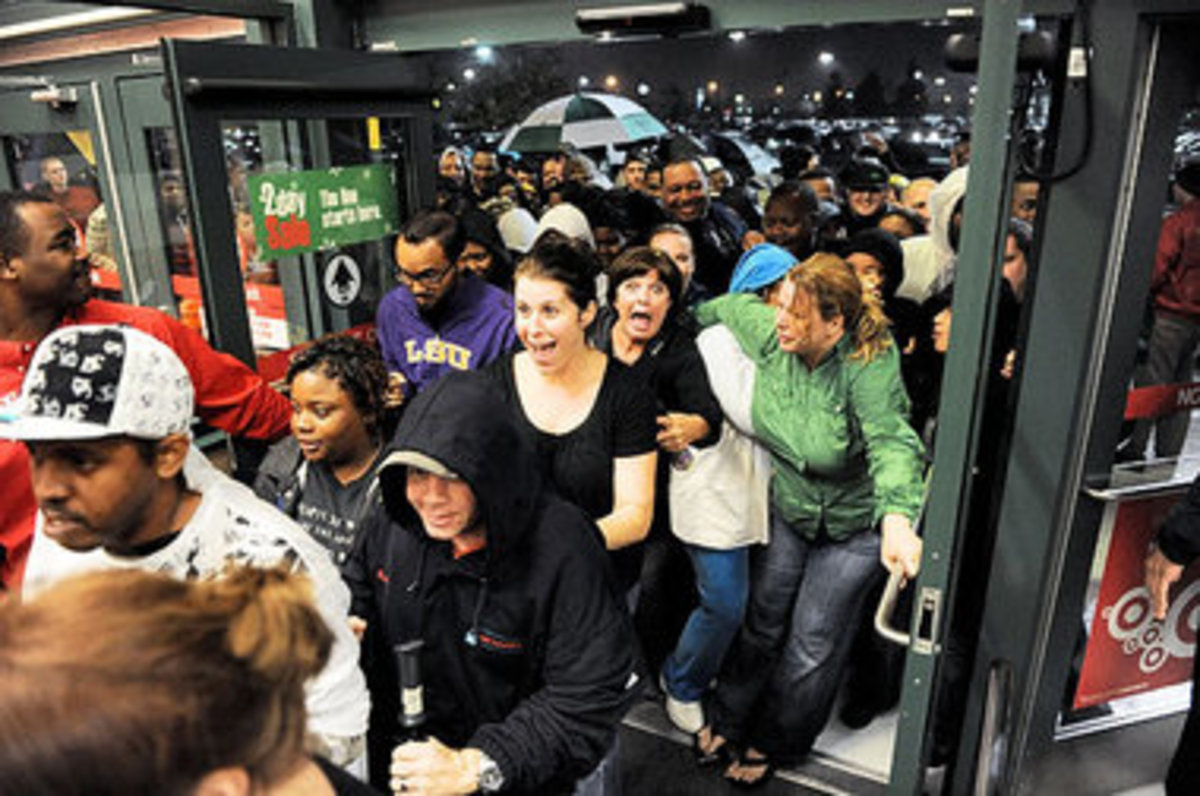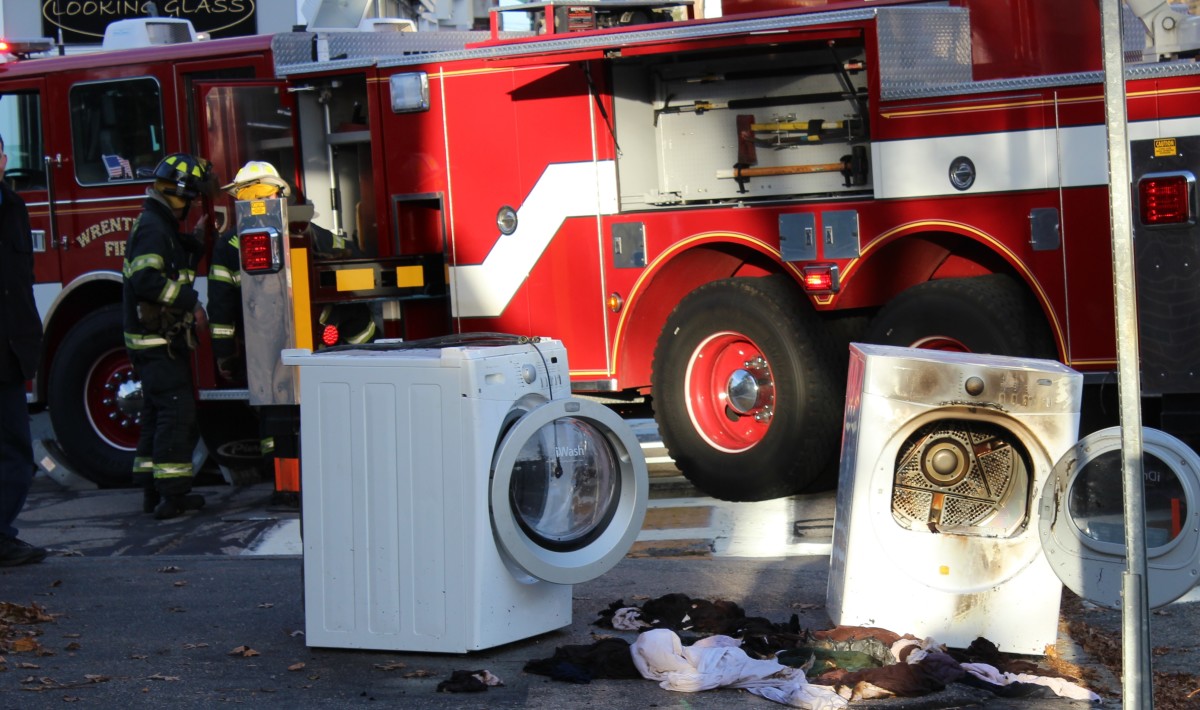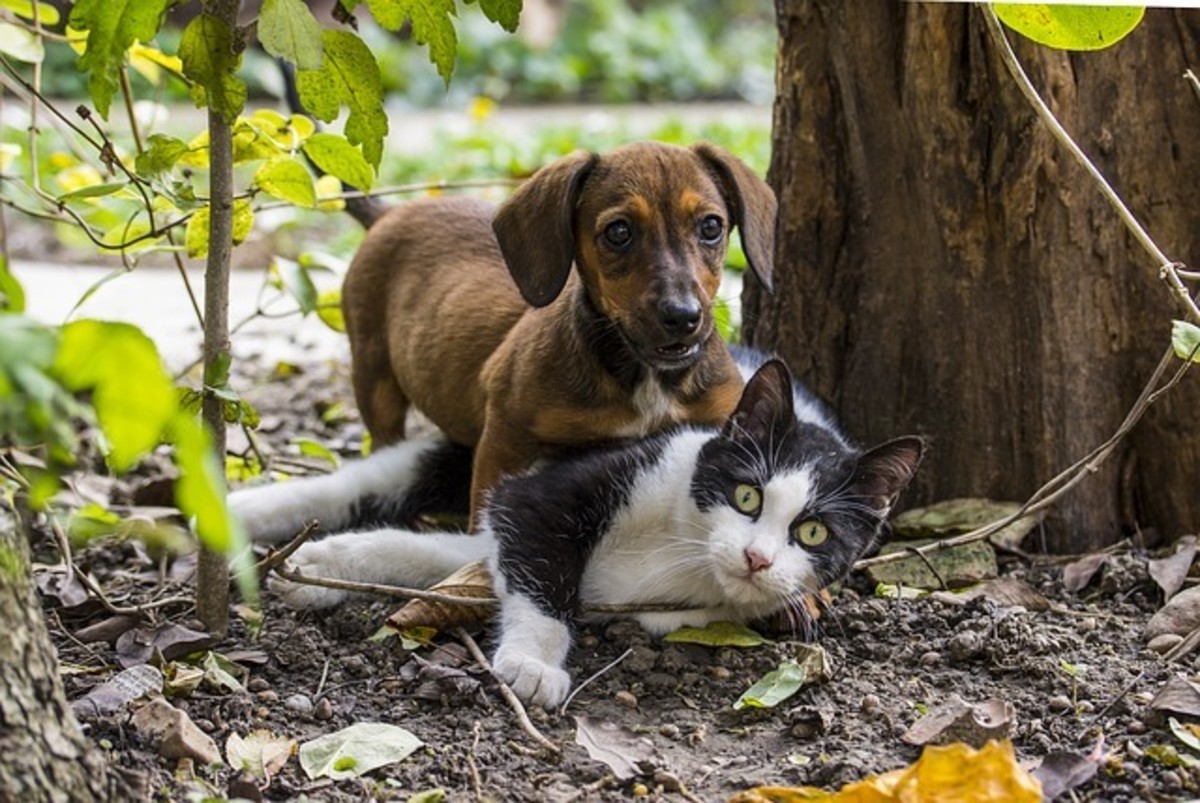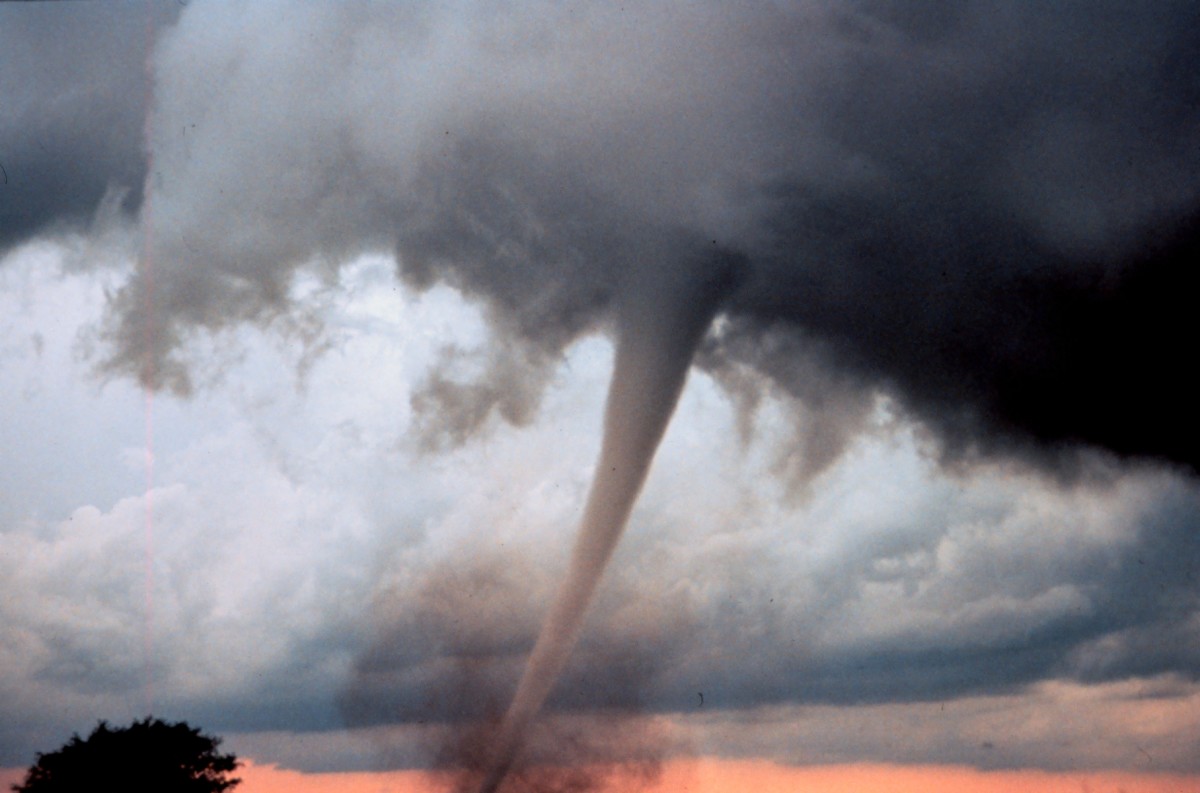The Quiet Wildfires
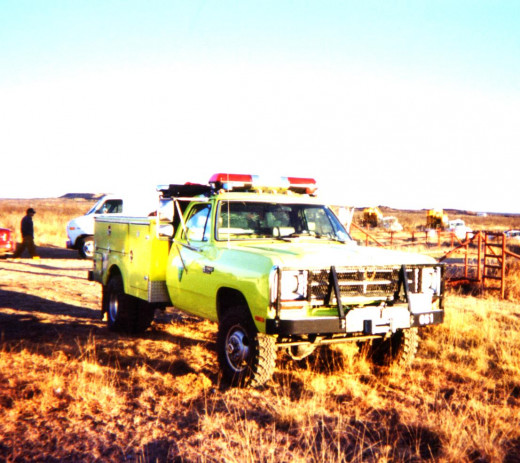
The Fires Few People Experience
Wildfires that people see on television news are large, violent, and threaten life and property. In truth, they make up only about one percent of the wildfires that are suppressed by wildland fire fighters. The other wildfires are rather benign, are usually fought by a handful of people, and have poor access. These were the bulk of the fires I fought over a ten year period while employed with the Bureau of Land Management. I've described them from the simplest to the more complex.
The Lone Tree Lightening Strike
As the name implies, the only fire burning was in a tree that was struck by lightening. Usually the tree was located on a ridge and up to a mile from the nearest road. The first people onsite to fight it were called initial attack. It almost always consisted of one brush truck that carried three people. Each person wore their line gear (day pack) with fire shelter, an MRE, a gallon of water, headlamp, and miscellaneous personal items. One person carried a chainsaw with respective extra fuel and bar oil, while the other two carried hand tools. At least one person carried a radio to stay in communication with the dispatch office. The easiest wildfire was a single tree strike that required cutting the tree down and extinguishing the fire with hand tools. Such a "wildfire" did not require a repeat visit and if you were lucky you got back to the truck before dark.
Okay, So It Is More Than a Single Tree Strike
Sometimes the embers from the tree successfully ignited the vegetation on the ground below. If the conditions were not optimal and the fire did not spread, only an acre or less had burned. At this point containment was the objective and a fire break line was dug around the entire fire with the hand tools. The line was accomplished by removing the vegetation, duff, and litter directly from the flames. If brush or trees were involved while establishing the line, one person ran the saw at the lead and the other two followed behind digging line with hand tools. The lighting strike tree sometimes needed to be dropped and extinguished. Other times the tree had already burned down. Once contained, the fire was allowed to die down and you left when you deemed it safe from spreading. On the way out (usually dark) you flagged the path from the fire to the truck. Why? Because the fire was not out and you or someone else would come back the next day to extinguish it fully. Ironically, a contained and controlled fire can be hard to find since it has very little smoke, so the you rely on the flagging to locate the fire the following day. On the second trip you would leave the saw behind and carried badder bags holding five gallons of water each along with hand tools. You used the water and hand tools to extinguish the remaining embers, declare the fire out and left. Over half the fires I was on were of this nature.
Extended Attack, Need Help
This type of fire got the attention of people living in the immediate vicinity. Just by the size of the smoke column you could tell it would take more than three people to suppress it. If you were lucky, a helicopter or small plane would be staged in your district and could fly over the fire to estimate its size and potential. This information would be coordinated with the dispatch office and additional resources (personnel and equipment) were ordered to fight the fire. More often than not, it was the usual three person brush truck crew to be first onsite to size up the fire, only this time you flagged your way in because you knew there would be others following you fairly soon. Once onsite you sized up the fire and discussed with the dispatch office/fire management officer the resources you needed and what resources were available. If the fire was slowly advancing, you could get help from additional wildland fire fighters from within your office. If it was advancing more quickly, you requested a slurry drop from an airplane or multiple water bucket drops from a helicopter, if available. You also requested enough additional personnel that they were brought in from other offices in your district (this often times turned into a family reunion of sorts as you met fellow firefighters you had not seen for a while and met new people as well).
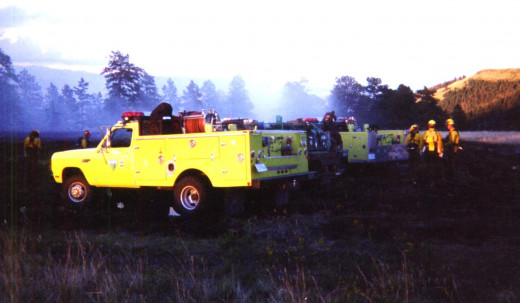
These fires were the most physically demanding as they usually had a respectable rate of spread and you were desperately trying to contain it with three people. You dug line at the toe (upwind side), then around the flanks, and if the flames were not too high or too intense, you dug line at the head of the fire. Whoever was coming to assist you also brought "cubies", square boxes of drinking water in five gallon containers. You dehydrated fairly quickly on these type of fires. Generally, if you could get an airplane to drop retardant on the fire or a helicopter to drop buckets water effectively (misses were common), you could slow the fire down enough that help would arrive in time. Ultimately the fire would be contained and controlled in two or three days. It would be five to 30 acres in size when the work was finished. A fire not contained within 24 hours of suppression was considered an extended attack. Without the air support, suppression efforts were dicey and the fire could get away and expand to tens or hundreds of acres by the end of the day. At this point the complexity of the fire and the resources needed to suppress the fire grew beyond the initial attack team's qualifications and at least a higher level incident commander was brought in. Often times the original initial attack team was released from the fire to resupply and stage for the next, new, reported fire.
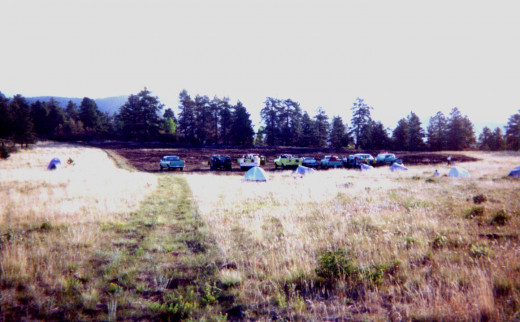
Other Types of Fire Supression
The above described fire scenarios were the most common. About ten percent of the fires were close enough to a road that you could control and contain it with the brush truck. Often times the ignition source was a careless cigarette, campfire, or the railroad grinding tracks on a hot day.
Other fires initially were small, but grew so quickly that by the time you got to it three people could do very little. You ended up crawling inside the black (already burned area) and reported the progress of the fire to the dispatch office as it grew exponentially. The fire management officer in the dispatch office would be putting together an overhead team that would fight the fire for days or even weeks.
Still other fires would be miles from the nearest road. If smoke jumpers were staged in your district, they took care of the fire. If not, you were flown in by helicopter. On the face of it, flying in by helicopter would sound exciting, but I Ioathed this arrangement. The fire was usually a mile or more from where the helicopter dropped you off. Once at the fire you had the dual duty of suppressing the fire and creating a drop zone for the helicopter to sling load supplies to you. Suffice to say, adding air support to logistics became complicated and running out of water, food, and lacking shelter could and did happen.
Finally, there were the existing large fires that despite being initial attack, we were sent to and became part of a large, wildland fire fighting force. Your duties varied widely from leaving the truck behind and joining a line crew to dig line, to going ahead of the flaming front to protect houses by cutting down brush and trees around them, to supplying water for "mop up" operations that extinguished small flames and embers inside a contained fire.
Safety, Safety, Safety
I cannot stress how much safety was emphasized. You were taught that fatalities resulted from an accumulation of errors. There were formal classes that addressed fire, most notably wildfire behavior. Several classes had elements of study of past fire fatalities and why they occurred. You were issued cards that had safety messages on them that you were to memorize. You stayed in constant radio contact with the dispatch office and were updated on the weather forecast and the additional resources and supplies coming your way. As an incident commander overseeing the fire, about half of the time your concentration was on suppressing the wildlfire, the other half planning logistics for the next few hours to possibly through the next day (ie: how many vegetarians are working under you and how do you arrange their meals?) I began to understand why commercial fisherman became so superstitious. When you knew the people, the equipment, the terrain, and predictable fire behavior, you were comfortable. New people who were not working well with the group, broken equipment, loss of radio contact, indecisive action between the incident commander and the dispatch office, or erratic fire behavior made you uncomfortable. I was on a few fires where several of these elements were failing and much to everyone's relief, the incident commander called off all suppression efforts and had everyone regroup in one central location to reformulate an attack plan.
The Next Wildfire You See on TV
The next time you see one of those large wildfires on television with dramatic footage of airplanes dropping red slurry on the fire and an interview with the incident commander; remember, at the same time there is an unknown initial attack team putting out a very small fire that no one has ever heard of - and that is exactly what the initial attack team wants.



